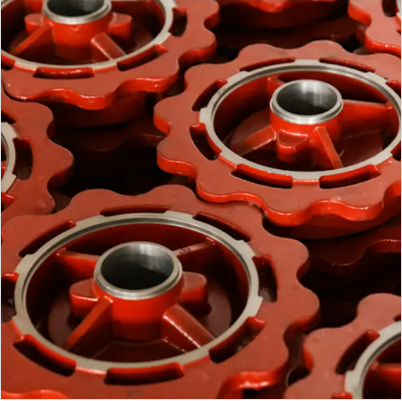Mobile:+86-311-808-126-83
Email:info@ydcastings.com
Guide to Effectively Cast Aluminum at Home for Beginners
How to Cast Aluminum A Comprehensive Guide
Casting aluminum is a popular technique used in various industries due to its versatility, lightweight properties, and excellent corrosion resistance. Whether you are an enthusiast looking to create custom parts or a professional in the manufacturing industry, understanding the basics of aluminum casting is essential. This article will outline the essential steps involved in casting aluminum, including necessary equipment, techniques, and safety precautions.
What is Aluminum Casting?
Aluminum casting involves pouring molten aluminum into a mold to create a specific shape or product. This method allows for high precision and can produce intricate designs that would be difficult to achieve with other manufacturing methods. There are several casting techniques, including sand casting, die casting, and investment casting, each with its own advantages and disadvantages.
Equipment and Materials Needed
Before beginning the casting process, you will need the following materials and equipment
1. Aluminum Alloys Choose the right aluminum alloy depending on your desired characteristics. Common alloys include 6061, 356, and 413.
2. Molds Molds can be made from metal, sand, or ceramic, depending on the casting method. For beginners, sand molds are often the easiest to work with.
3. Furnace A melting furnace is necessary for heating the aluminum to its melting point (around 660°C or 1220°F). You can use a backyard foundry, electric furnace, or propane furnace, depending on your scale of production.
4. Crucible This is a container made from materials that can withstand high temperatures, such as graphite or ceramic, to hold the aluminum as it melts.
5. Safety Gear Protective gear is crucial when casting aluminum. This includes heat-resistant gloves, safety goggles, and a face shield to protect against molten metal splashes.
The Casting Process
how to cast aluminum

1. Mold Preparation Begin by preparing the mold. If you are using sand casting, mix fine sand with a binder material and pack it around a pattern that shapes the desired form. Ensure that there are vent holes for gases to escape during pouring.
2. Melting the Aluminum Place the aluminum scrap or ingots into the crucible and heat it in the furnace. Monitor the temperature carefully, and use a thermometer to ensure you reach the proper melting point.
3. Pouring the Aluminum Once the aluminum is molten, carefully remove it from the furnace using tongs. Pour it slowly and steadily into the mold. It’s crucial to control the pouring speed to avoid creating air pockets or defects in the final product.
4. Cooling Allow the aluminum to cool and solidify in the mold. Cooling times can vary based on the thickness of the casting and the type of mold used.
5. Removing the Casting Once the aluminum has cooled completely, carefully remove it from the mold. For sand molds, this may involve breaking the mold apart. For metal molds, a suitable method for ejection will be required.
6. Finishing After removing the casting, it may require additional finishing work. This can include grinding, sanding, or machining to achieve the desired surface finish or accuracy.
Safety Precautions
Casting aluminum involves working with extremely high temperatures and molten metal, making safety paramount. Here are some essential safety precautions
- Always work in a well-ventilated area to avoid inhaling harmful fumes. - Wear appropriate protective clothing to shield against heat and sharp objects. - Keep a fire extinguisher nearby in case of emergencies. - Never leave molten aluminum unattended, and ensure that all equipment is in good working condition.
Conclusion
Casting aluminum can be a rewarding and practical skill, allowing for the creation of a wide variety of parts and products. By following the right techniques and maintaining safety precautions, you can achieve great results in your aluminum casting endeavors. Whether you’re creating prototypes, custom parts, or decorative items, understanding the casting process opens a world of possibilities for your projects. Remember, practice makes perfect, so don’t hesitate to experiment and refine your techniques over time. Happy casting!
-
Why Should You Invest in Superior Pump Castings for Your Equipment?NewsJun.09,2025
-
Unlock Performance Potential with Stainless Impellers and Aluminum End CapsNewsJun.09,2025
-
Revolutionize Your Machinery with Superior Cast Iron and Aluminum ComponentsNewsJun.09,2025
-
Revolutionize Fluid Dynamics with Premium Pump ComponentsNewsJun.09,2025
-
Optimizing Industrial Systems with Essential Valve ComponentsNewsJun.09,2025
-
Elevate Grid Efficiency with High-Precision Power CastingsNewsJun.09,2025











